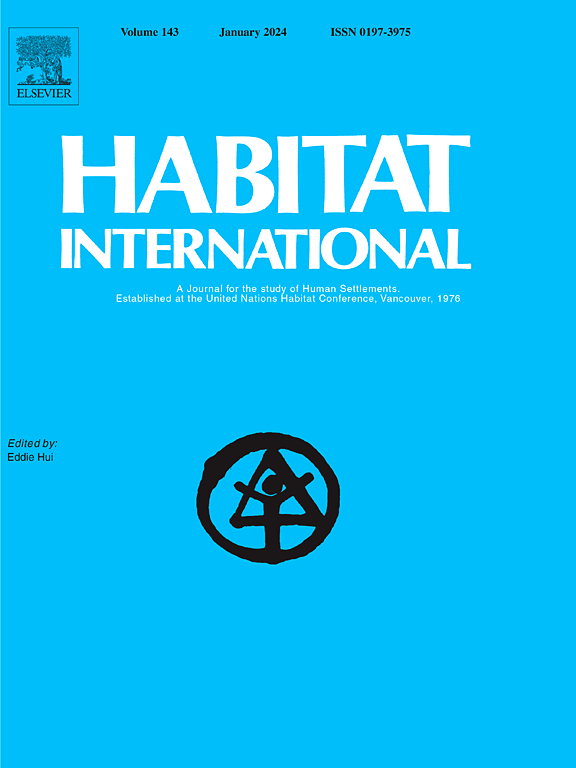Understanding the transformation of rural areal system from changes in farmland landscape: A case study of Jiaocun township, Henan province
IF 7
1区 经济学
Q1 DEVELOPMENT STUDIES
引用次数: 0
Abstract
Rapid globalization and urbanization are reshaping the urban-rural landscape, driving transformations in rural areas. Exploring this process contributes to understanding the mechanisms of rural transformation, aiding decision-making for rural sustainable development. However, the evidence to capture microscale dynamics of rural transformation still requires innovative observational perspectives. Taking Jiaocun Town, a traditional agricultural region in China, as an example, we detected changes in farmland landscape using satellite data at the plot scale. Combined with interviews, these changes were further traced back to the 1980s. Furthermore, this study revealed the Transformation of Rural Areal System (TRAS) process by interpreting landscape changes and their linkages between population, land, and industry. The results showed that four events dominated the recent transformation: the replacement of fragmented farmland with large fields, the upgrading of old apple orchards to dwarf orchards, the expansion of vineyards, and the expansion of mushroom sheds. Temporally, the development of Jiaocun experienced three stages: the traditional period (pre-1990s), the extensive expansion period (1990s-2016), and the modern diversified period (2016-present). These three stages could be clearly demonstrated through the analysis of the coupling state of population, land, and industries, reflecting the adaptive cycling from primary coupling to under-coupling and then to re-coupling. Finally, policy, theoretical, and practical implications were discussed to deepen the understanding of the rural transformation in China's traditional agricultural region.
从农田景观变化看农村地域系统变迁——以河南胶村乡为例
快速的全球化和城市化正在重塑城乡格局,推动农村地区的变革。探索这一过程有助于理解农村转型的机制,有助于农村可持续发展的决策。然而,捕捉农村转型微观动态的证据仍然需要创新的观察视角。以中国传统农业区胶村镇为例,在样地尺度上利用卫星数据检测农田景观变化。结合采访,这些变化可以进一步追溯到20世纪80年代。此外,本研究还通过对景观变化及其与人口、土地和工业之间联系的解释,揭示了农村区域系统转型的过程。研究结果表明,近年来的转变主要有四个方面:大田取代细碎农田、老苹果园向矮化果园升级、葡萄园扩张和蘑菇棚扩张。从时间上看,胶村的发展经历了三个阶段:传统时期(90年代前)、广泛扩张时期(90年代-2016年)和现代多元化时期(2016年至今)。通过对人口、土地和产业耦合状态的分析,可以清晰地体现这三个阶段,反映了从初级耦合到欠耦合再到再耦合的自适应循环。最后,探讨了政策、理论和实践意义,以加深对中国传统农业区农村转型的认识。
本文章由计算机程序翻译,如有差异,请以英文原文为准。
求助全文
约1分钟内获得全文
求助全文
来源期刊

Habitat International
Multiple-
CiteScore
10.50
自引率
10.30%
发文量
151
审稿时长
38 days
期刊介绍:
Habitat International is dedicated to the study of urban and rural human settlements: their planning, design, production and management. Its main focus is on urbanisation in its broadest sense in the developing world. However, increasingly the interrelationships and linkages between cities and towns in the developing and developed worlds are becoming apparent and solutions to the problems that result are urgently required. The economic, social, technological and political systems of the world are intertwined and changes in one region almost always affect other regions.
 求助内容:
求助内容: 应助结果提醒方式:
应助结果提醒方式:


